The collections hold more than two thousand paintings, with the broad chronological spectrum reflecting the rich history of Beaux-Arts de Paris. The oldest come from Alexandre Lenoir’s Musée des Monuments Français and from generous collectors who wanted to fuel the imaginations of young artists. The majority of the paintings relate directly to the functioning of the school. As the successor to the Académie Royale de Peinture et de Sculpture, Beaux-Arts de Paris holds the works that won its Grand Prix, founded in 1664, as well as a significant selection of the reception pieces that new members had to present to the society prior to their admission. In the 19th and 20th centuries, the proliferation of competitions, reinforced the school’s educational emulation (Prix de Rome for historical landscapes, for facial expressions, and torsos, ébauches, painted figures, and the Jauvin d’Attainville) and contributed to the systematic enrichment of the school’s heritage, which conserved the prize-winning works as testimonies to excellence. This museum of the youthful works of tomorrows arts is completed by an extraordinary collection of copies of ancient masters, most made by residents of the Académie de France in Rome. The most monumental is Michelangelo’s Last Judgment found in the Chapelle des Petits-Augustins. The collection continues to be enriched thanks to foundational prizes, gifts from former students and teachers, as well as a contemporary acquisition policy that revitalizes the educational material available to the young artists.
Paul Delaroche, L’Hémicycle du Palais des Beaux-Arts : l'assemblée des artistes les plus célèbres réunie autour du Génie des Arts distribuant des couronnes, 1837-1841, wax and oil, 390 x 2470 cm

Jean-Nicolas Servandoni, Ruines de monuments antiques, av. 1731, Huile sur toile, 260 x 195 cm
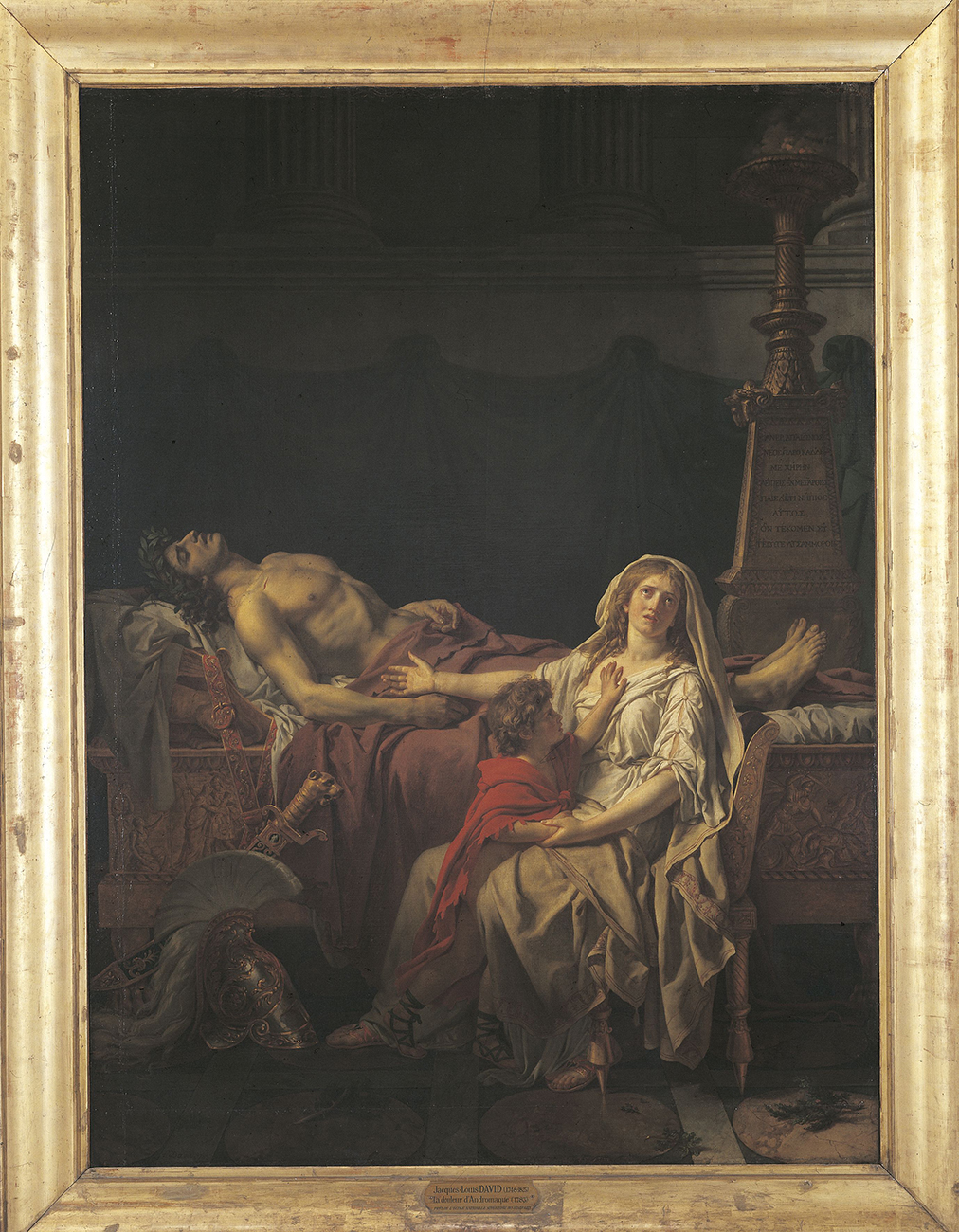
Jacques Louis David, La douleur et les regrets d’Andromaque sur le corps d’Hector, son époux, 1783, Huile sur toile, 275 x 203 cm
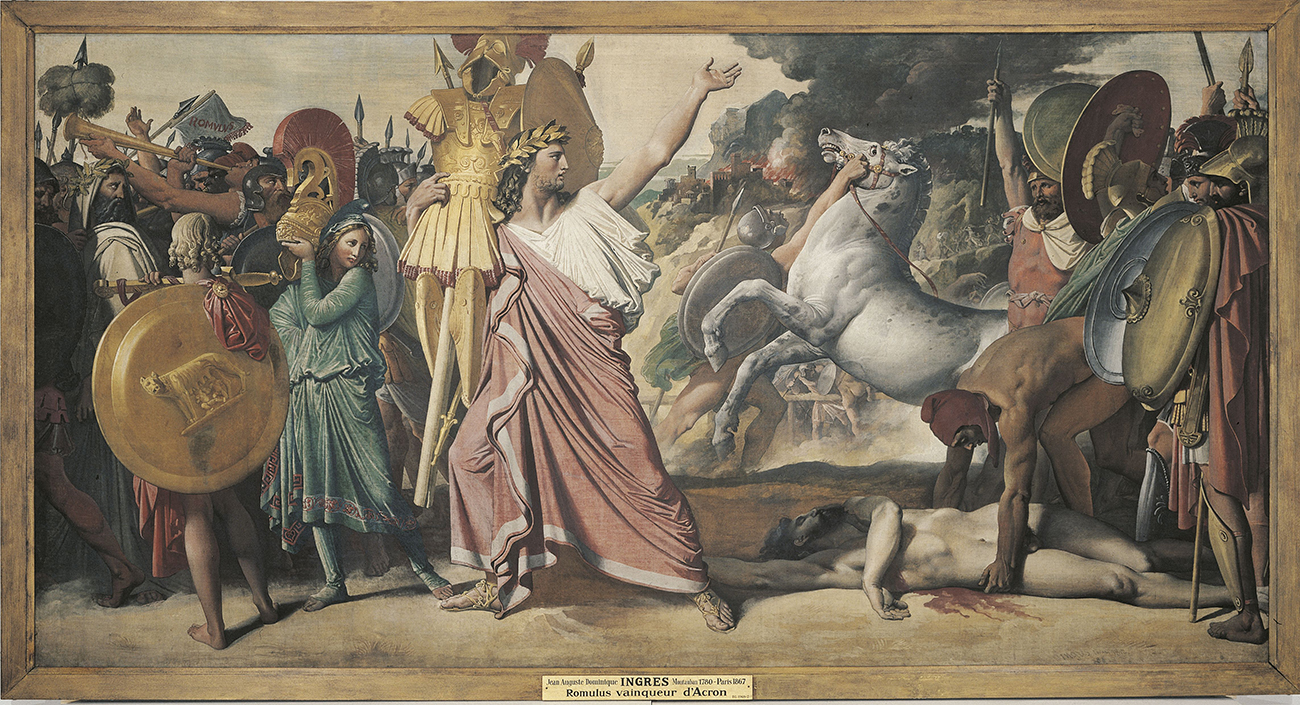
Jean Auguste Dominique Ingres, Romulus vainqueur d’Acron, 1812, Détrempe sur toile, 275 x 533 cm
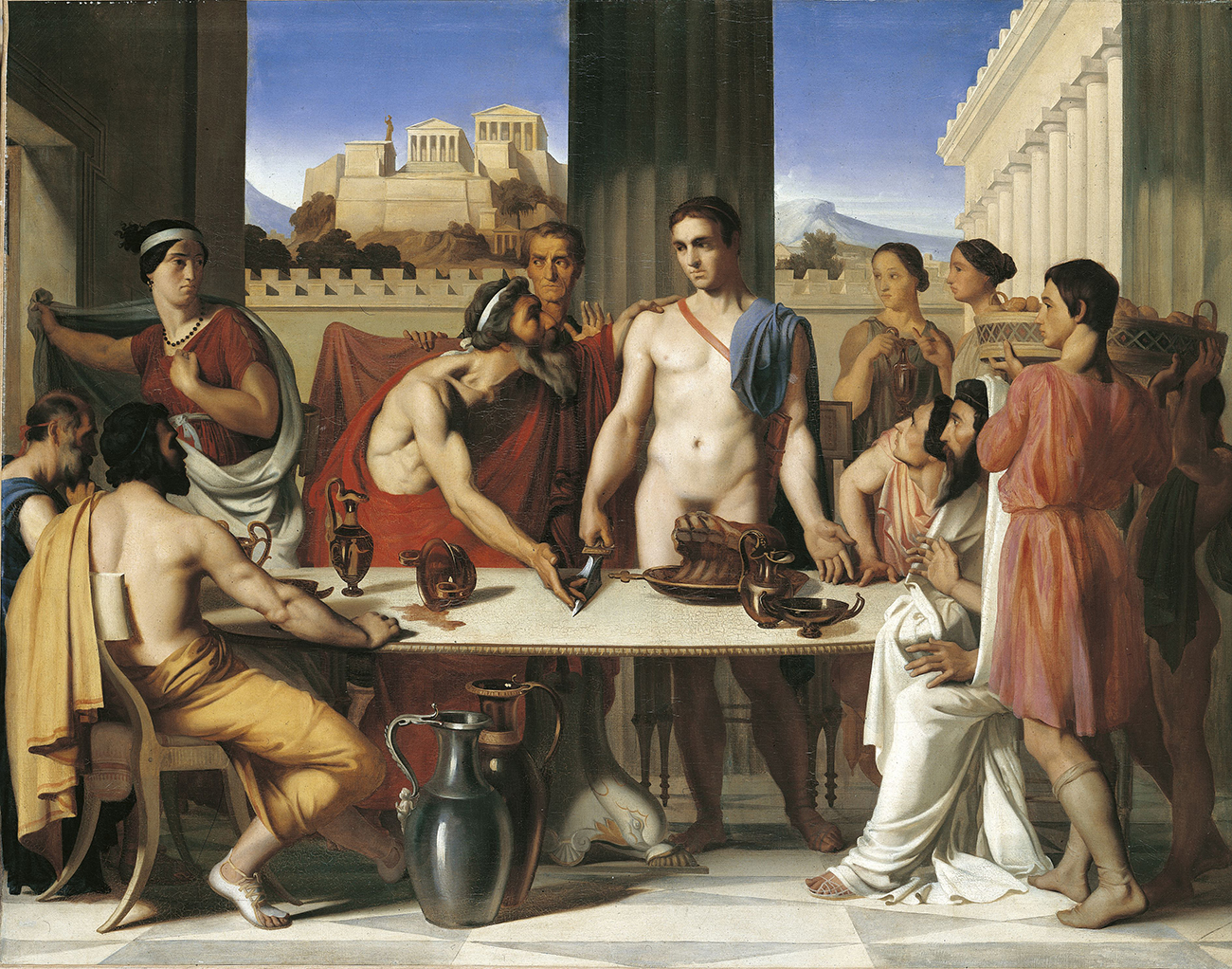
Hippolyte Jean Flandrin, Thésée reconnu par son père, 1832, Huile sur toile, 115 x 146 cm
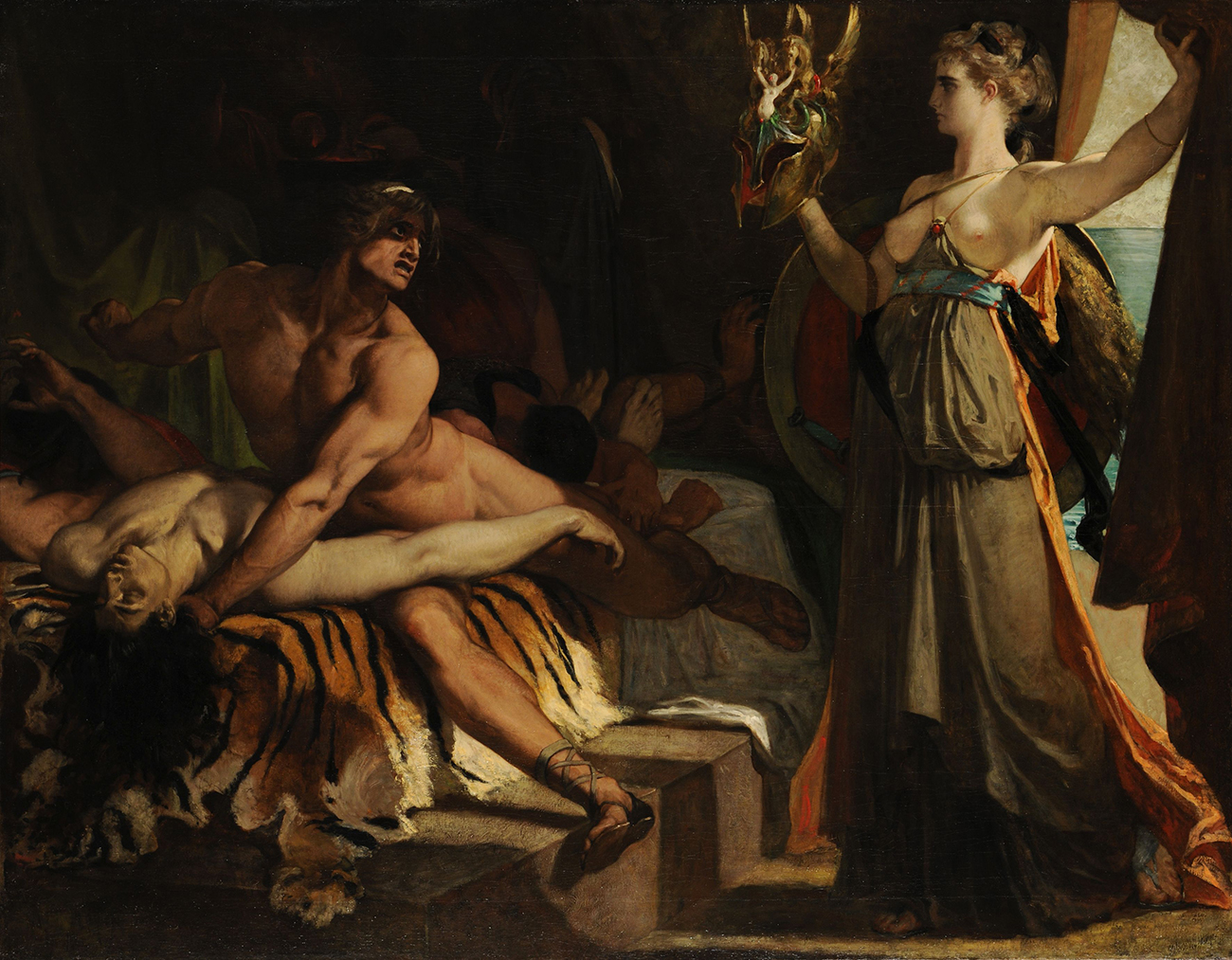
Henri Alexandre Georges Regnault, Thétis apporte à Achille les armes forgées par Vulcain, 1866, Huile sur toile, 113 x 146 cm
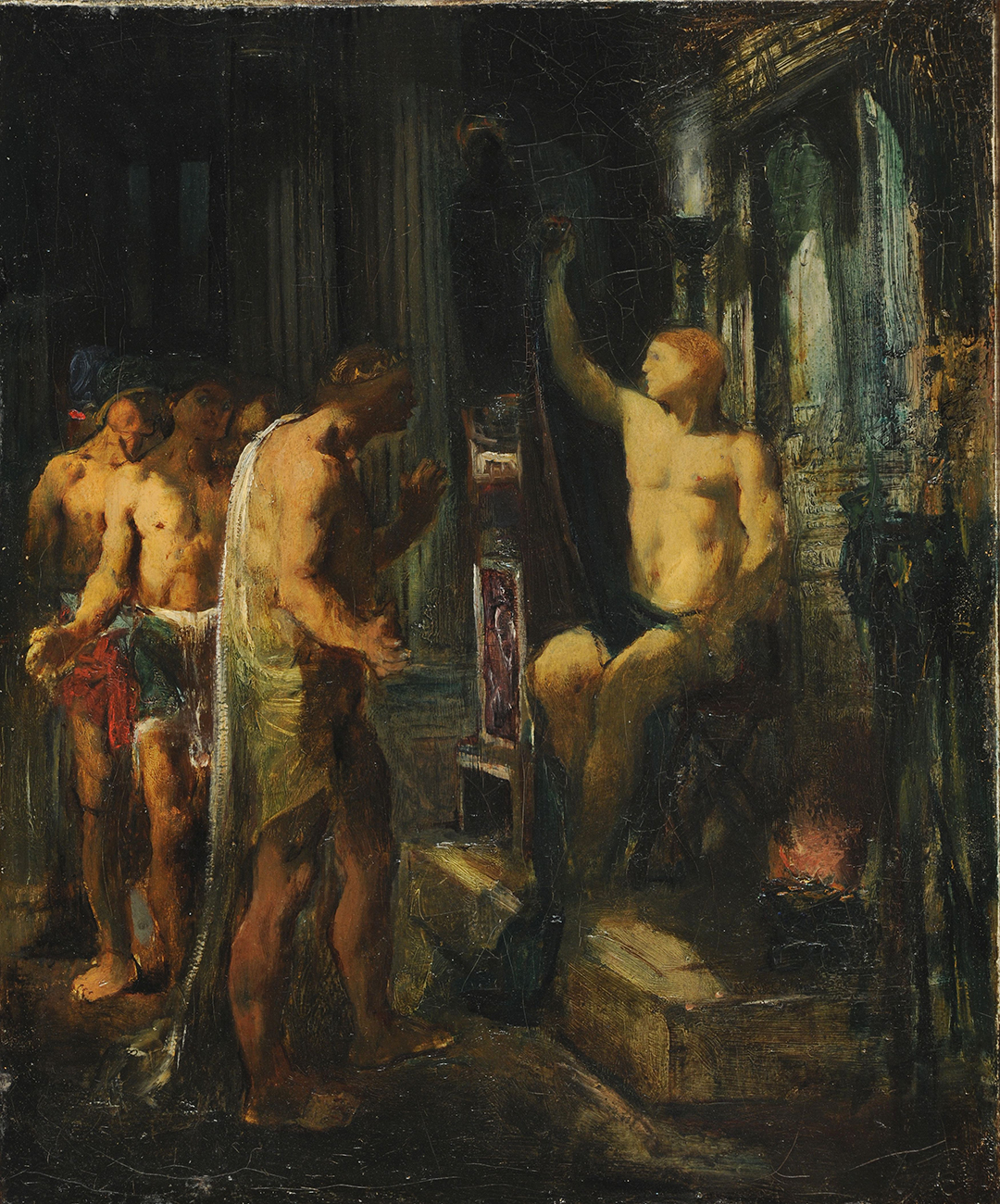
Georges Henri Rouault, Coriolan chez Tullus, roi des Volsques, 1894, Huile sur toile, 46 x 38 cm
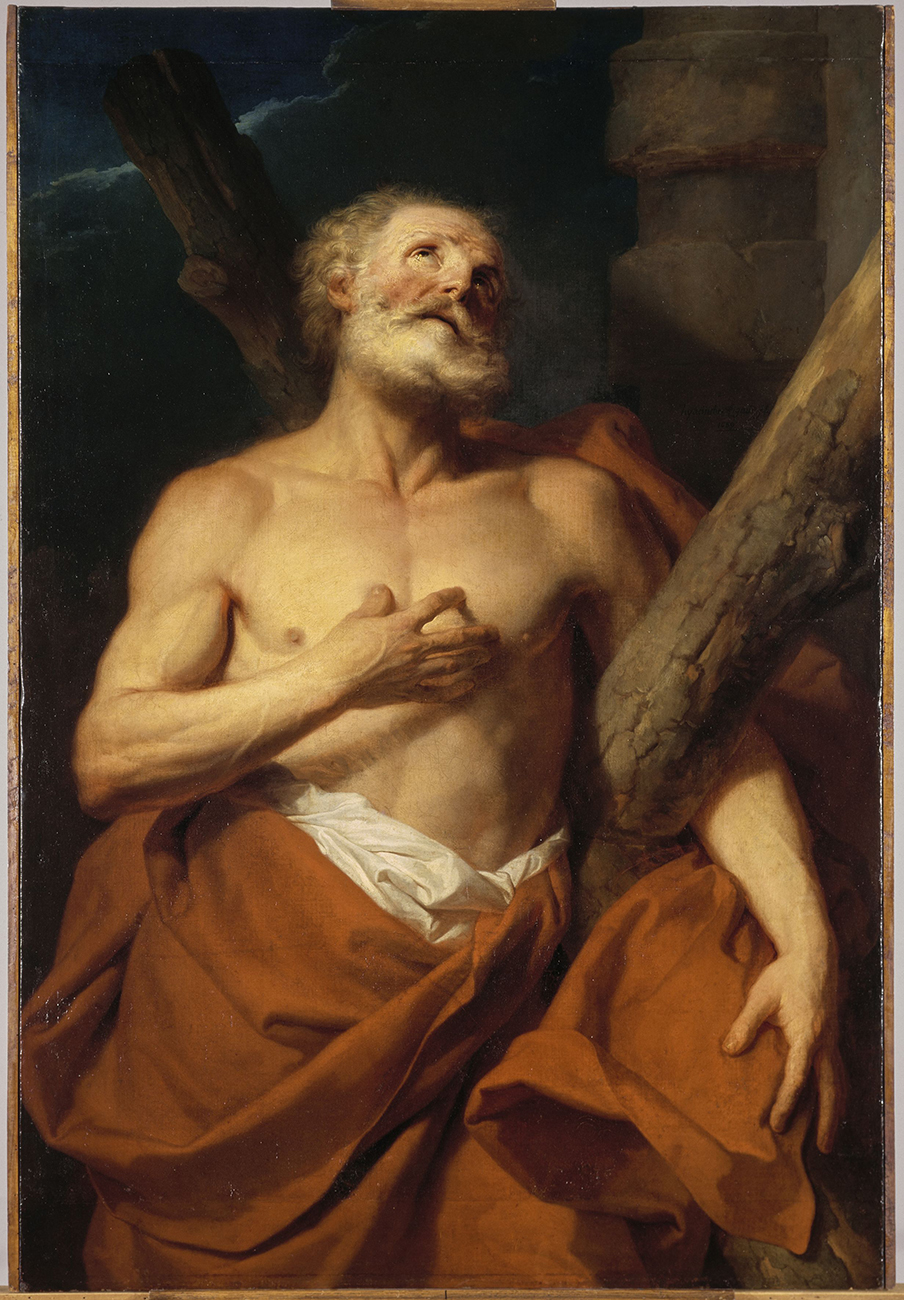
Hyacinthe Rigaud, Saint-André, 1689, Huile sur toile, 153 x 106 cm
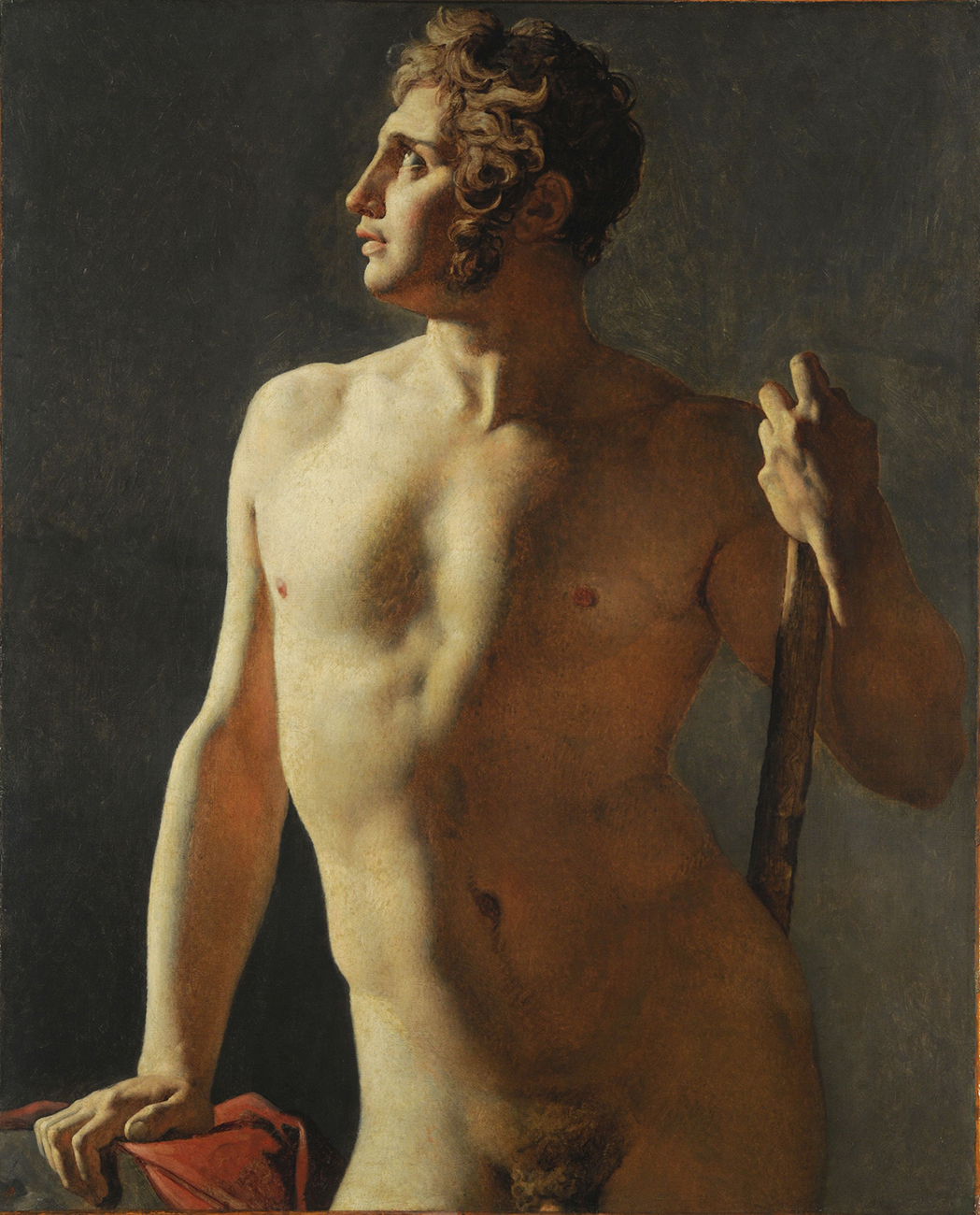
Jean Auguste Dominique Ingres, Torse, 1800, Huile sur toile, 102 x 80 cm
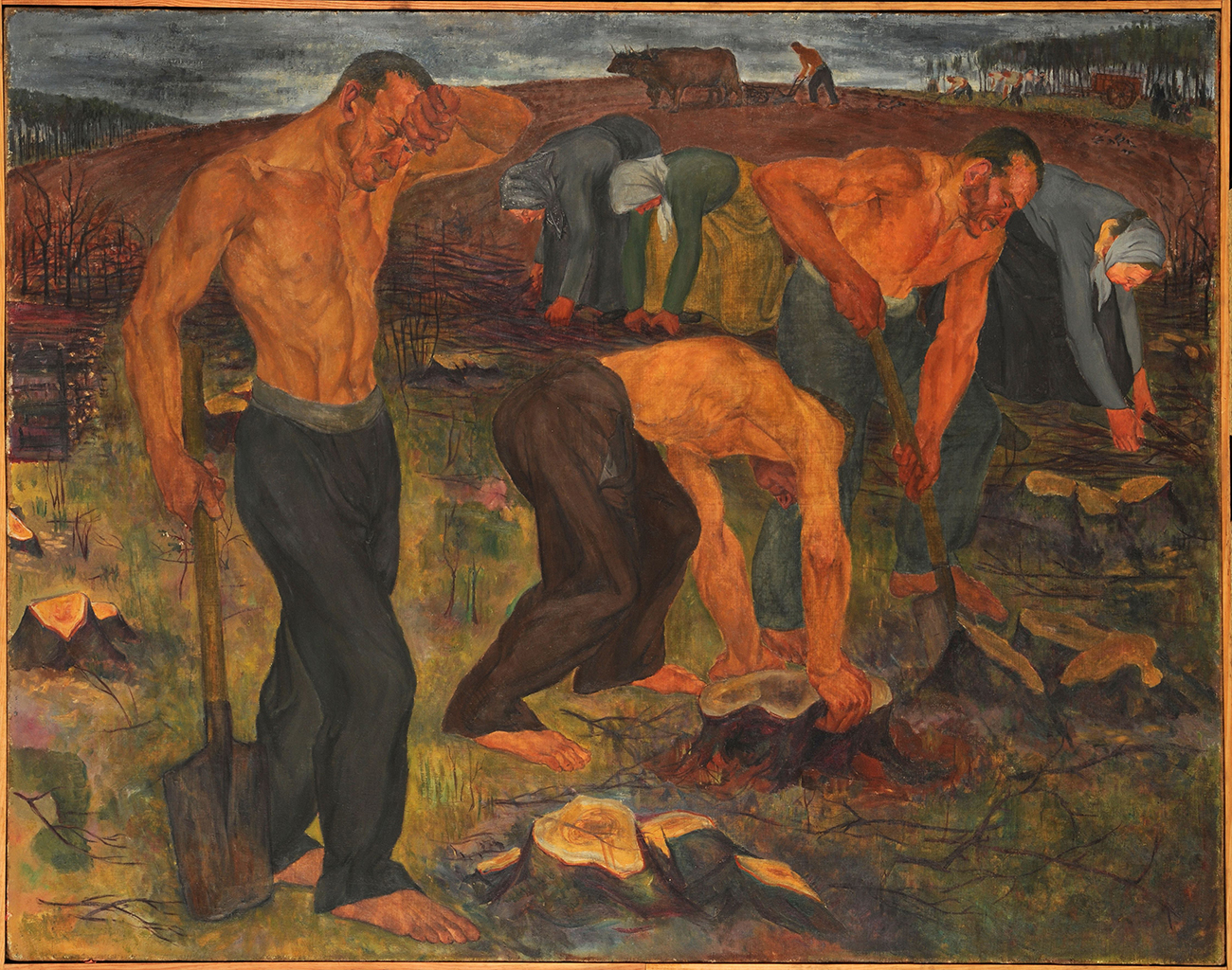
Madeleine Georges Charlotte Lavanture, Tu gagneras ton pain à la sueur de ton front, 1938, Huile sur toile, c. 115 x 147 cm
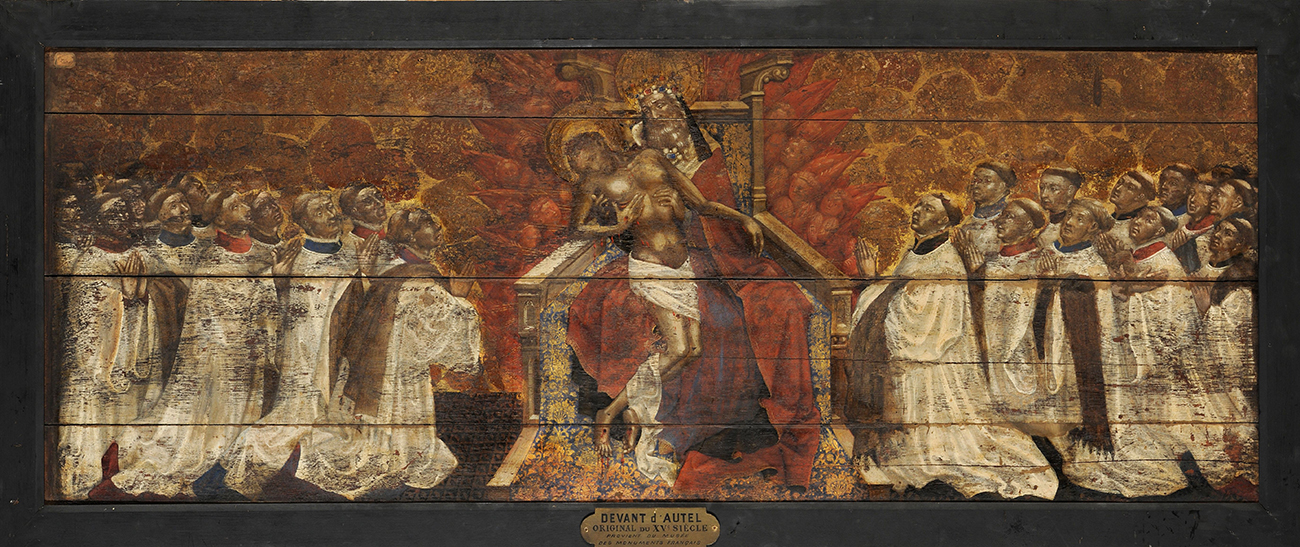
Maître de Dunois, La Trinité souffrante entourée de chanoines de Notre-Dame de Paris, XVe siècle, Pigment sur panneau de chêne, 68 x 179 cm



